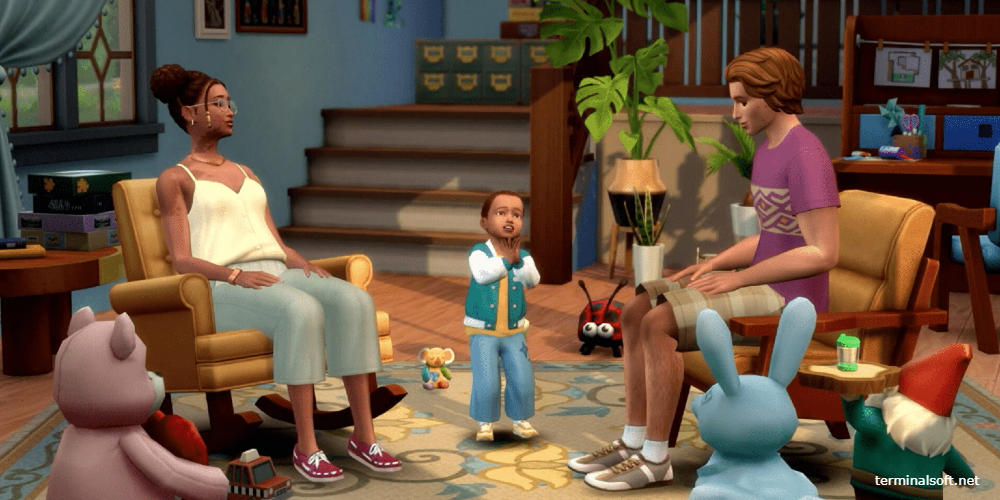The Sims™ 4 review
The Sims™ 4, the fourth major title in the life simulation game series by Maxis and published by Electronic Arts, stands as a pillar of creative freedom in the world of video games. Released in 2014, this iteration of The Sims franchise has continued to capture the hearts of those who savor the power to control and orchestrate the daily lives of their virtual avatars - the Sims. With every expansion pack and game update released, The Sims™ 4 remains an evolving canvas, compelling players to return, create, and play with life like never before.
The Lifecycle of a Sim - Mechanics of Being
Embarking on the gameplay of The Sims™ 4 is akin to stepping into the shoes of a deity, with each player wielding authority over the destiny of their Sims. The Create-a-Sim tool offers extensive customization options, from physical appearance to defining personality traits that influence behavior and interactions. The building mechanics have been refined from previous iterations, granting the ability to sculpt the perfect home, tile by tile, room by room, with a simplicity that belies the depth of options available.
Once their domain is established, players guide their Sims through the twists and turns of everyday life, from careers and relationships to hobbies and beyond. The game mechanics are structured around the fulfillment of desires and needs that mimic reality yet are laced with enough whimsical elements to ensure you remain in a game world.
In the realm of The Sims™ 4, the gameplay is a robust, multifaceted pillar upon which the entire Sims experience stands. Players start their journey in the extensive Create-a-Sim mode, which has evolved significantly from earlier titles. It introduces intricacies like personality traits that govern behavior, aspirations that set life goals, and a direct manipulation feature, allowing players to click and drag on a Sim’s body parts to alter their appearance with unprecedented granularity. This meticulous level of customization is not simply skin-deep; it defines how Sims interact with their world, form relationships, and pursue careers.

Once players lovingly, or in some cases haphazardly, craft their Sims, they can dive into the Live Mode, where the day-to-day actions of their creations unfold. Sims have necessities that mimic real-life needs: hunger, hygiene, social interaction, fun, and sleep. Balancing these needs is crucial in guiding Sims to prosper, excel in their professional lives, and forge meaningful connections with other denizens of their digital ecosystem.
The Sims™ 4 introduces an emotional system that adds depth to the gameplay. Sims now experience a broader range of emotional states affecting their social interactions, performance at work, and the propensity to engage in various activities. Joyful Sims find themselves more creative, while melancholic ones might produce a masterpiece of sadness on their canvas. These dynamic emotional states open new dialogue options and actions, creating a more responsive and immersive experience.
Another significant component of gameplay is the Build Mode, where players are architects of their Sims’ abodes. The grid-based system has been overhauled to include features like adjustable room sizes and an extensive catalog of furniture and decorations. Such innovations make for an engrossing and sometimes complex urban planning and interior design simulator in its own right.
Players aren’t constrained to the four walls of a home either. The Sims™ 4’s world is dotted with neighborhoods and community lots, each with unique NPCs and interactive environments. These spaces host festivals, social gatherings, and other community events that Sims can participate in, providing ample opportunity for socialization, skill improvement, and various other lifestyle activities.
However, the gameplay isn’t without hindrance. The introduction of smaller worlds broken up into loading screens between lots was a divisive change, contrasting with the open-world concept of its predecessor, The Sims™ 3. Some players find the segmented worlds less immersive and a step back in the series’ evolution. Furthermore, certain life stages and features that were present in older versions of the game required additional content purchases in The Sims™ 4, which initially left some players wanting more out of the base game.
With patches and updates, the game has welcomed additions like toddlers and new career paths, rectifying early criticisms to an extent. These game updates, combined with the rich tapestry of user-generated content, have kept the gameplay experience from going stale, enabling an environment that thrives on player-driven innovation and recalibration.

Innovative Aesthetics and Intuitive Designs
Graphically, The Sims™ 4 showcases vibrant, stylized visuals that breathe life into Sims and their environments. Colors are rich, animations are smoother than their predecessors, and the attention to detail within the textures provides a modern, almost storybook appeal to the world. This polished look enhances the immersion factor, prompting players to sink hours upon hours into perfecting their Sims' surroundings.
The control scheme of The Sims™ 4 is well-crafted, ensuring player input is nearly as seamless as thought. With easy-to-navigate menus and an unobtrusive user interface, the learning curve is friendly, even for those new to the series. Controls feel responsive whether you're meticulously organizing furniture or directing your Sim to master a new skill.
The Art of Replayability... and a Few Missteps
One of the crowning aspects of The Sims™ 4 is its high replayability value. With no strict goals and an endless variety of scenarios to create, each new game can feel like a fresh experience. The addition of downloadable content, expansion packs, and a bevy of custom content from an active community keeps the game experience feeling rich and infinitely expandable.
However, it would be remiss to overlook the application’s weaknesses that intermittently surface like a bothersome ghost haunting an otherwise idyllic suburban lot. Some players express discontent over the pricing of downloadable content, citing the cost as steep for the content provided. Certain expected features from previous games at launch, such as toddlers and swimming pools, were conspicuously absent, though added later due to fan feedback. Furthermore, performance issues, bugs, and glitches do appear from time to time, sacrificing a sliver of the game's polish.

Life in Retrospect - Users' Sentiments
The community's perspective on The Sims™ 4 ranges widely. For many, it's an outlet for creativity and escape, offering a parallel life where one can enact fantasies or face consequences without real-world repercussions. Long-time fans confirm that The Sims™ 4, with all its updates and enhancements, continues to hold a special place in their library for its charming simulation of life's complexity.
Despite the grievances some have concerning DLC pricing and content integration, the general consensus is that the game provides a satisfying, often therapeutic escapade into a world that responds to the touch of your imagination.
Pros

- Extensive customization tools for both Sims and their habitats
- Vibrant, detailed graphics that bring the Sims world to life
- Intuitive controls accessible for players of all levels
- High replayability with diverse life scenarios and open-ended gameplay
- Actively supported with new content and community-driven mods
Cons

- Additional content can be costly, accumulating a hefty price for the complete experience
- Initial lack of features compared to previous Sims titles, leading to early player dissatisfaction
- Occasional performance issues and bugs can disrupt gameplay.










